Description of self-assessment diagnostic techniques
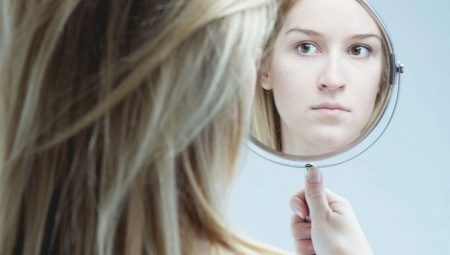
The most important regulator of an individual's behavior, his activity in learning, work, communication and self-education is self-assessment. Diagnostic studies help the subject to achieve objective self-esteem, learn to control and critically evaluate their actions, find mistakes and ways to eliminate them.

Features of the formation of self-esteem
Anyone has a tendency to compare himself to other people. On the basis of this, his self-esteem is formed. The concept itself includes a person's assessment of their qualities, capabilities, abilities and characteristics of their own activities... Self-esteem tends to change depending on success in studies and work, from being in a certain age group.
In the early stages of development, the baby primarily evaluates personal physical qualities and capabilities.... The child considers himself to be an intelligent, strong, beautiful and big person. Later, he begins to realize his actions, actions, practical skills and moral values. The relationship between the child and the parent has a great influence. A difficult emotional state is experienced by adolescents who begin to feel like a mature person and feel oppressed by the restriction of their will and constant control by adults. Teenage self-esteem is put to great test.
Children with adequate self-esteem sociable, active, resourceful, not devoid of a sense of humor. They willingly make contact with others. Low perception oneself leads to passivity, suspiciousness, excessive vulnerability and resentment. The fear of being worse than other children leads to refusal to participate in various activities. Toddlers with high self-esteem often express aggression towards other children, because others should obey only them and do as they want it.
The personality is formed as a result of social adaptation. Self-esteem is reflected in interactions with strangers. It affects the future fate of a person.
To move forward, you need to strengthen and raise confidence in yourself, in your own capabilities. You can find out your self-esteem using various techniques.

Popular diagnostic methods
You can check the level of development of self-esteem in children and adults using various diagnostic procedures. They help to get a holistic view of age and individual options for assessing oneself.
"Ladder"
This method involves identifying the general attitude of the child towards himself and how, in his opinion, others relate to him. Teats can be used for the diagnostic study of children three years of age and older. To carry out the diagnosis, you will need a wooden or drawn 10-step ladder, a figure of a man, a piece of paper and a pencil. First, the child is offered to seat the children on the ladder: the best friends should be placed on the top step, and, accordingly, very bad children should be on the bottom step.
Then the kid is obliged to place the human figurine where he himself deserves to sit. The child should explain why this particular step was chosen. Then the baby determines where his relatives would put him: mom, dad, grandmother, grandfather, sister, brother, friend. The child should comment on why someone close to him will not put him on the upper or lower step. Then he has to guess where the rest of the family members of the brother or sister would be placed. All variants of these positions are fixed on the drawn staircase.
It takes about half an hour to talk to a child.
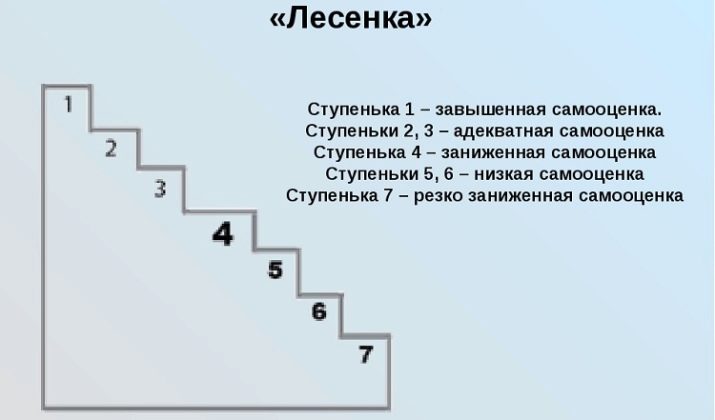
"Traffic lights"
Using color tracks, you can determine the level of student confidence in completing an assignment and answering a question... The child chooses one of three colors, marks homework or classwork with them. Red color signals anxiety caused by great difficulty in performing an exercise or solving a problem. Yellow color means that the child does not quite understand the topic. Green tone indicates a complete understanding of the material being studied. The teacher, checking the notebooks, understands which of the schoolchildren needs help in what issue. During the lesson, the student raises red, yellow or green card... "Traffic light" allows the teacher to navigate whether the class is ready to move on.
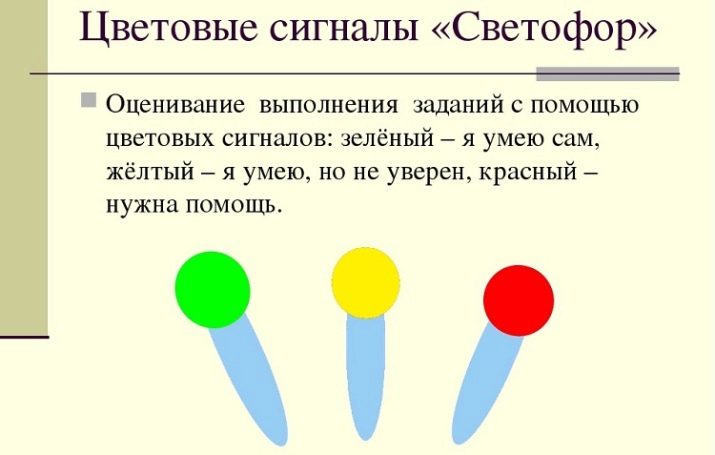
A. V. Zakharov's technique
This method helps to determine the emotional level of the child when assessing himself. For this purpose, the subject is offered a series of graphically depicted circles that represent people. The respondent needs to place himself in one of the eight circles.
The next test item is a large ball surrounded by small balls. The subject himself is placed in the central ball. Relatives, friends and teachers should be placed in the rest of the circles. The third picture shows an isosceles triangle, at the top of which there are conditionally parents, in the left corner - a teacher, in the right - friends. It is necessary to put a point where the respondent represents his location. The fourth test involves finding your place in a large circle and fixing it. And finally, in conclusion, the child is offered another task. Five circles are drawn and under them in the central part there are two more circles. The kid should imagine that he is in the bottom row.He needs to choose one of two balls and place himself in it.
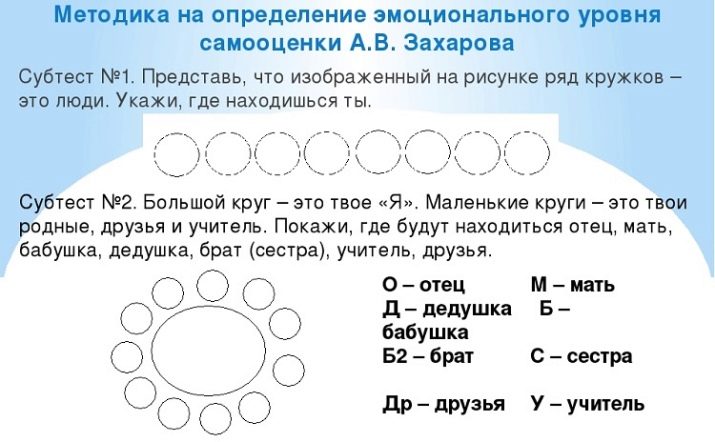
Other ways of research
The technique of S. A. Budassi allows for a quantitative analysis of the self-esteem of the personality of a teenager and an adult. It is based on the ranking method. Of the 48 words suggested, the subject is asked to select 20 preferred and undesirable personality traits inherent in an ideal person. Positive traits should be placed at the top of the table, and unattractive traits at the bottom. Then there is a similar ranking of 20 qualities characteristic of the respondent himself. The proposed method reveals the real idea of the individual about himself and the desire for what he would like to become. The technique allows you to measure the size of the gap between the levels of aspiration and self-assessment.
The Dembo-Rubinstein test is not limited to personality traits analysis. It takes into account mental abilities, personality traits, health and happiness levels. The subject is offered 4 vertical scales with these indicators. On all lines, you need to find points where a person feels himself at the moment, and at what level, taking into account his own capabilities, he could be. Each scale is equal to 10 cm. The disadvantages are concentrated at the bottom, advantages at the top. The respondent marks the point of finding a quality on the line with a cross, the location of which would cause him satisfaction and pride in himself. The dash denotes the level inherent in the respondent at a given time.
For the test, you can use 7 scales, symbolizing the level of mental capabilities, basic character traits, health, appearance, authority among peers, the ability to do something with your own hands and self-confidence.


Interpretation of results
Analyzing the results obtained during the methodology "Ladder" data, psychologists establish the child's attitude to himself. Typically, preschoolers and primary school children place themselves at the top of the stairs. They consider themselves to be good children, but at the same time they often cannot justify their choice. If a child puts himself on one of the top three steps, then this indicates an overestimated self-esteem. If he is at 4-7 steps, then the baby assesses himself adequately. The bottom three steps mean an underestimated perception of oneself.
The kid may underestimate their capabilities and abilities as a result of a recent quarrel with loved ones. This decline in scores is temporary. During the conversation, it is necessary to find out the stability of the data obtained. Critically low self-esteem indicates emotional stress due to frequent complaints from teachers, disapproving peer reviews and parental condemnation.
The interpretation of the data obtained as a result of the study by the method of A.V. Zakharov is as follows:
- in the first test, the norm is an indication of the third and fourth circles, the choice of the first ball means an overestimation of self-esteem, an indication of 6,7 and 8 circles indicates a low self-perception;
- the second test task helps to determine the relationship with others: the child feels superior over the loved ones located in the lower balls and experiences pressure on himself from the people placed in the upper circles;
- the third test determines the child's involvement in the world around him and the degree of closeness with different categories of people, while if the respondent is outside the triangle, then he is not interested in social contacts and, possibly, feels rejection by society;
- in the fourth task, placing oneself in the very center of the circle means a high degree of egocentrism, which is usually characteristic of preschoolers, but not of school-age children;
- the last test testifies to the awareness of their uniqueness when placing themselves in the right circle and the recognition of their similarity with others when pointing to the left ball.
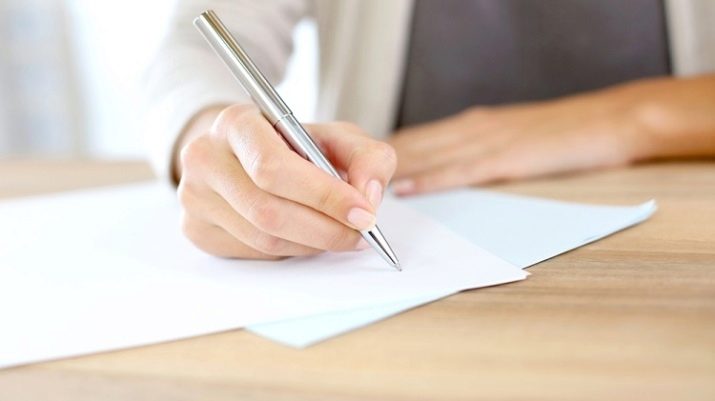
Method S. A. Budassi allows you to identify the difference between real and ideal ideas of the subject about himself.The perception of one's own person is based on objective knowledge and subjective opinion, which are not always adequate. The individual sometimes ascribes to himself qualities that are not peculiar to him. Assessment of oneself is carried out by comparing personal desires with the real results of one's actions, as well as comparing with others.
To calculate the coefficient of the index of the degree of the subject's perception of himself, one must first calculate the difference in ranks for each quality. Then you need to perform the action of squaring them. Then the sum of the squares of the difference obtained from the ranking should be multiplied by 0.00075. Since the coefficient of the ratio of ranks can be in the range from -1 to +1, then you need to subtract the result obtained earlier from one.
Adequate assessment of oneself is associated with self-esteem and awareness of one's own usefulness. In this case, a person accepts himself as a person. The value of the correlation coefficient with a positive perception of oneself is from +0.38 to +1. Understatement means a negative attitude towards oneself, rejection of oneself, a feeling of inferiority. Then the value of the coefficient of the rank ratio is in the range from -0.38 to -1.
In the Dembo-Rubinstein technique the determination of the average value of the indicators of the level of self-assessment and the degree of aspirations is carried out according to four or seven scales. The size of one line is 100 mm, which corresponds to 100 points.
The degree of claims is measured in millimeters from the lowest point to the cross. The height of the assessment of the perception of oneself is the distance in millimeters from the bottom of the line to the line depicted by the respondent.









